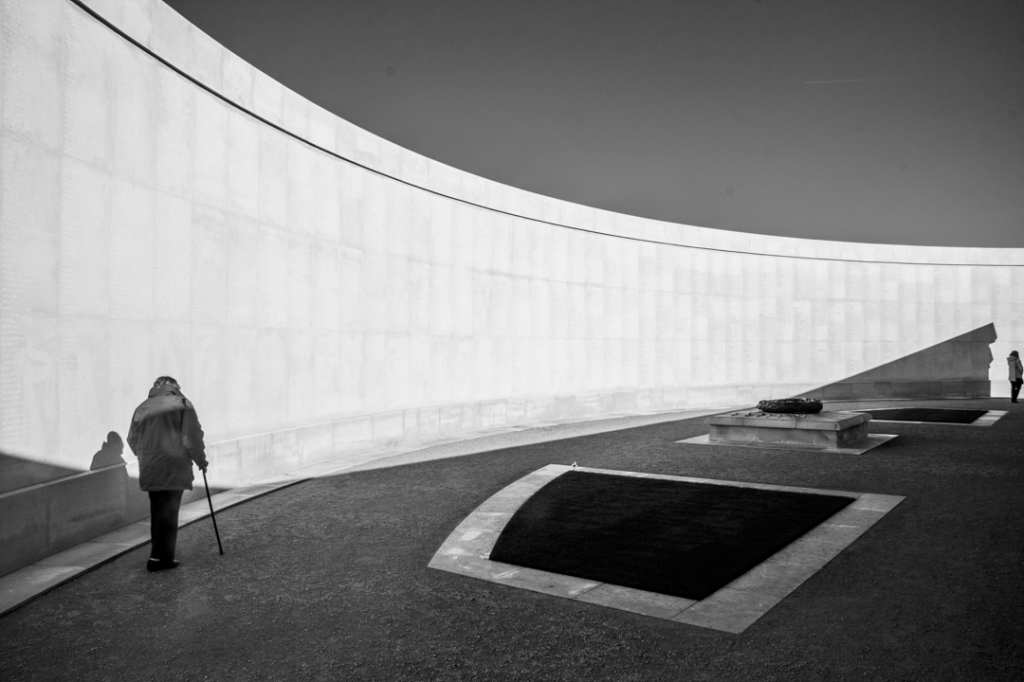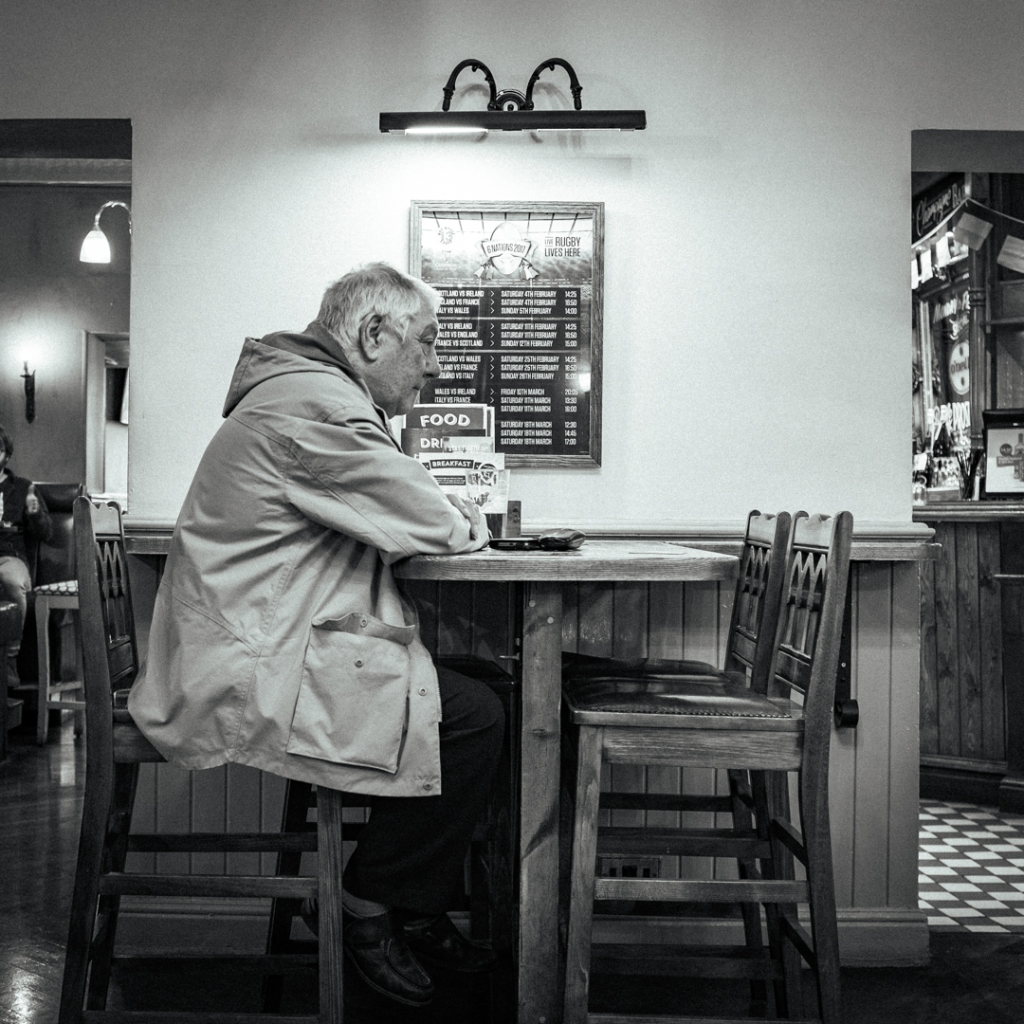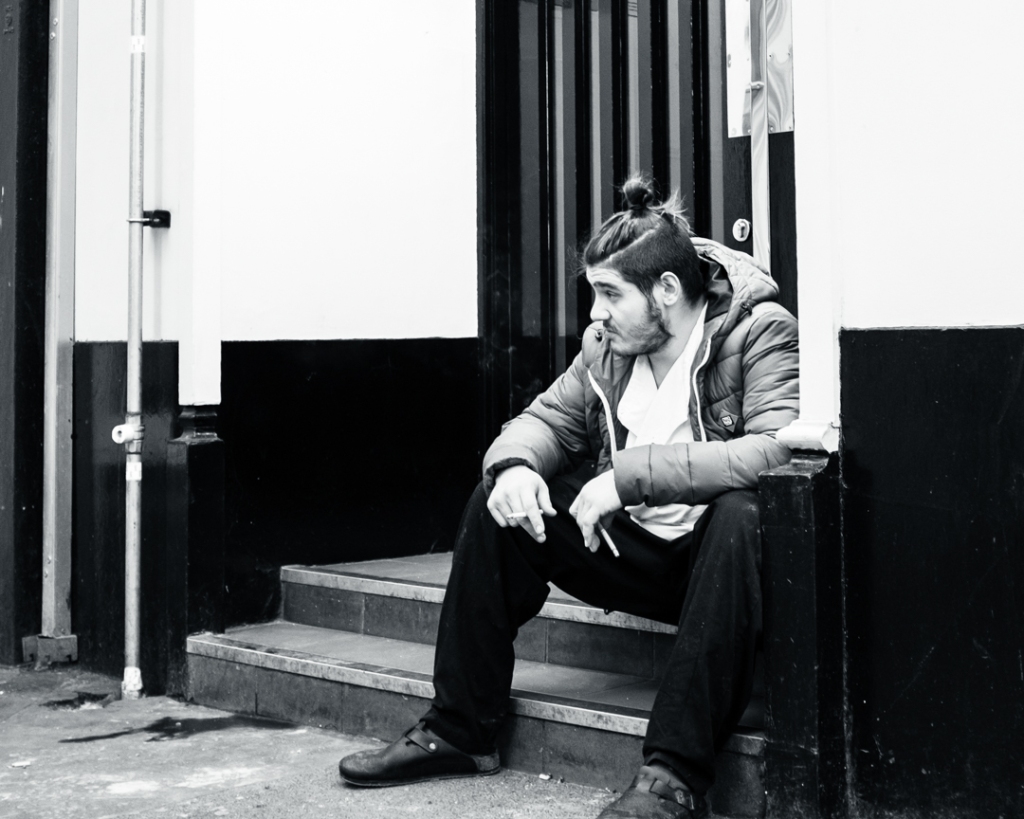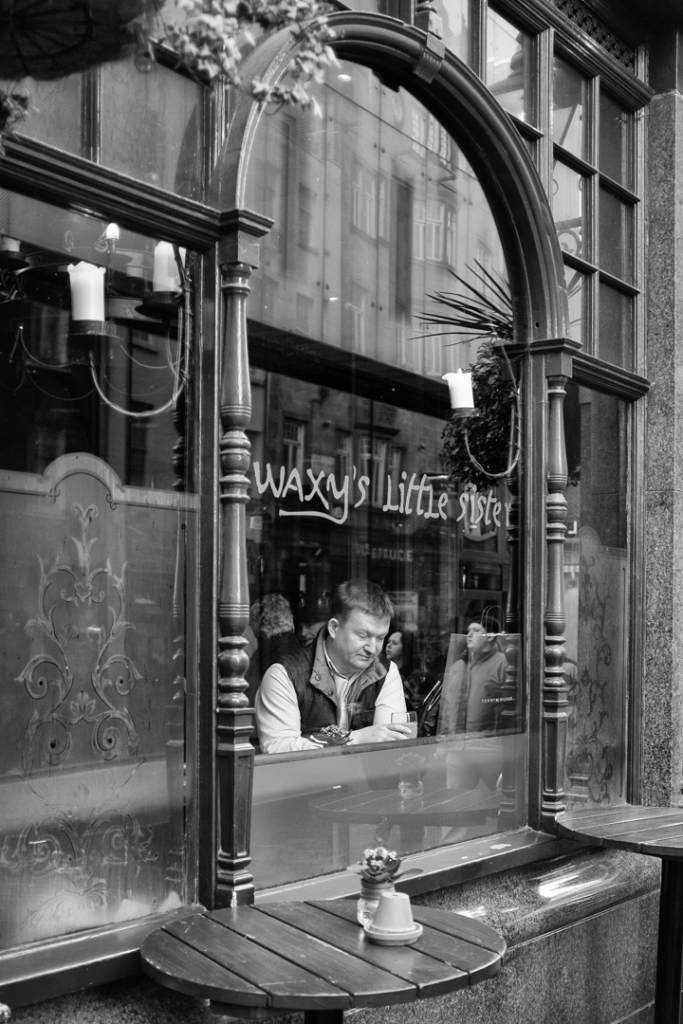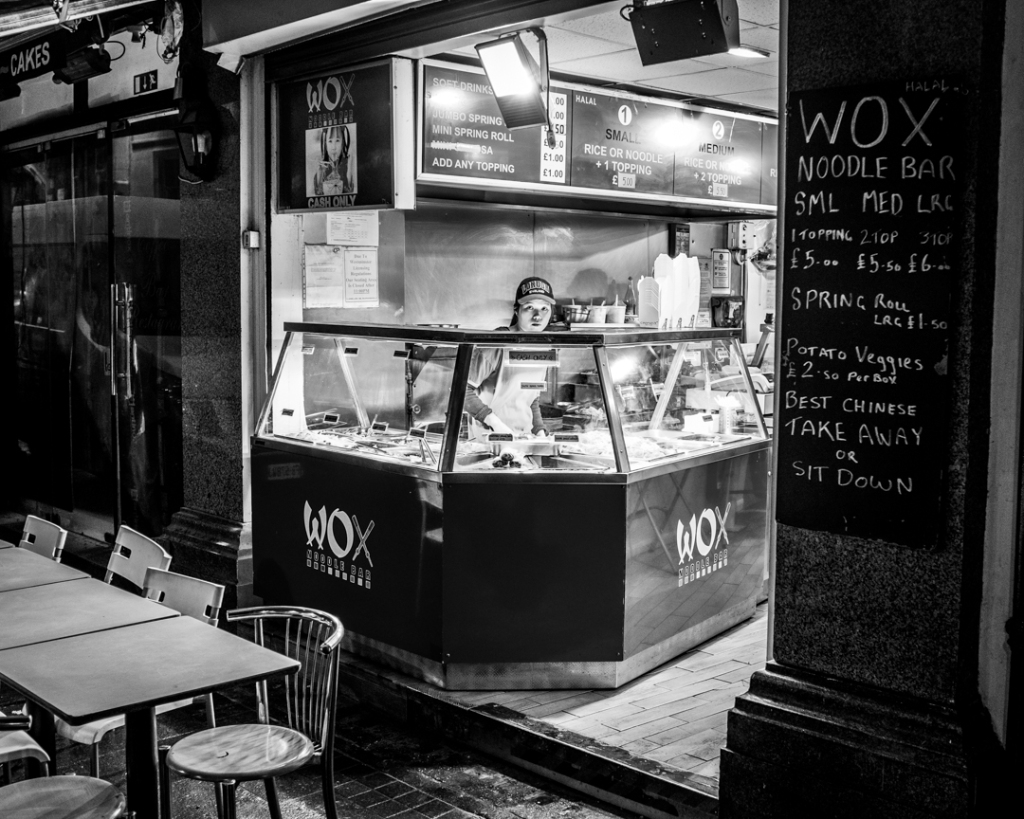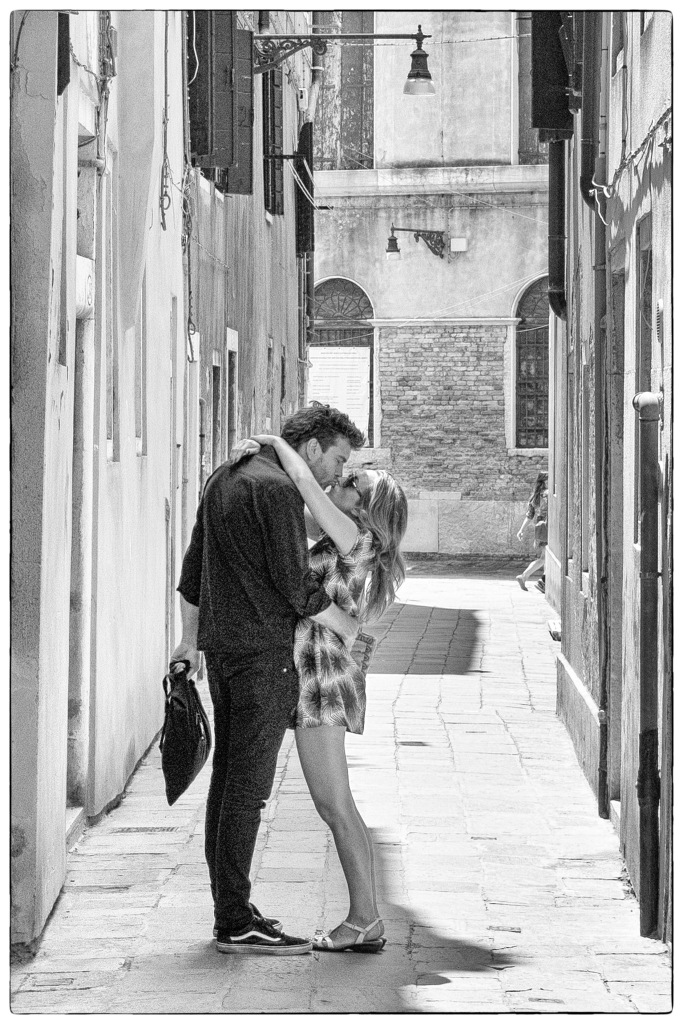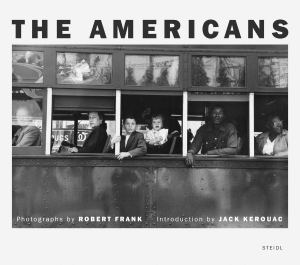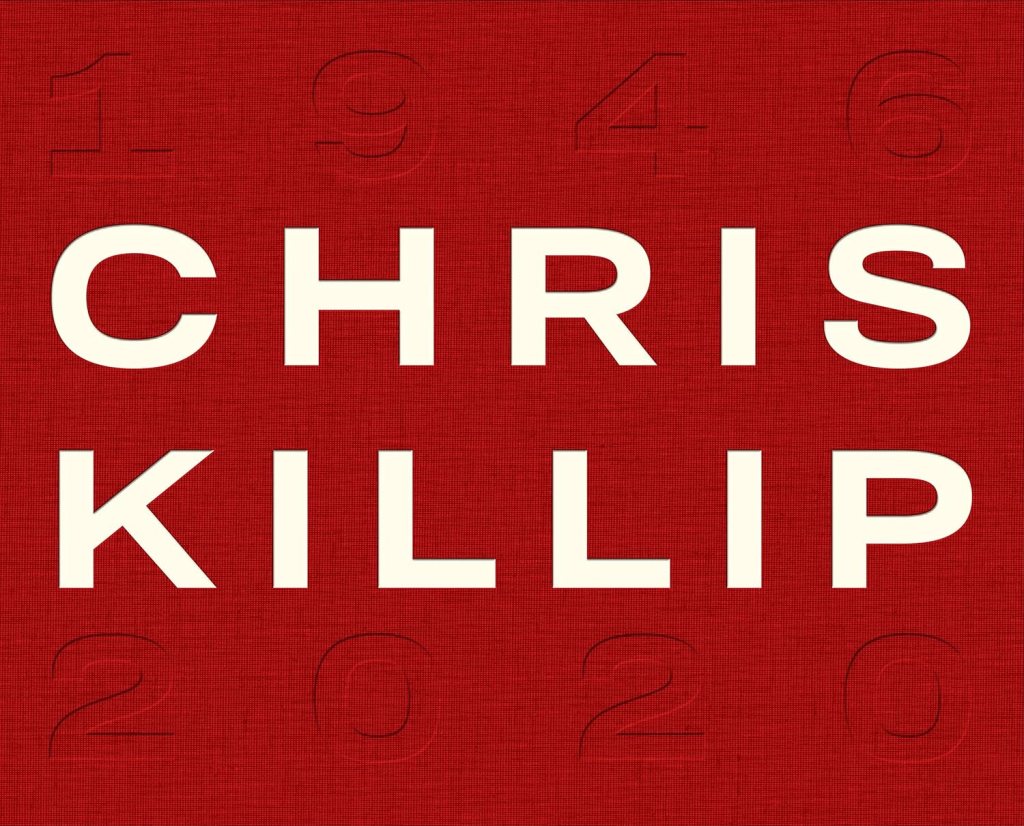“When people look at my pictures I want them to feel the way they do when they want to read a line of a poem twice.“
Robert Frank
A powerful street photograph can evoke emotions in the viewer, whether it’s joy, sadness, curiosity, or surprise. Capturing genuine human moments or expressions can add emotional depth to the image.
Capturing human emotion in street photographs can be a daunting task, especially if you struggle with the very idea of getting up close to people. Whilst some of the strongest street photographs that contain emotional impact certainly do have people in them it does not necessarily have to be the case. Sometime an object or a place in a particular time can also invoke emotional responses in the viewer.
As street photographers we can often walk around all day and return home with very little to show for our efforts and time spent. Sometimes this can be because we have simply not taken some of the photographs we should have done. Early on in my time learning street photography I would often dither wondering if I should capture a scene subconsciously asking myself, what value it had. I have now learnt however that if you are thinking this then there probably was something going on that peeked your interest at a deeper, emotional state. My approach now is to always take that image, no matter how trivial or pointless it may look and only decide afterwards when viewing those images whether it was worth capturing or not. I find that it is often when you look at an image later or reevaluate an older image you begin to understand why you wanted to capture it and this is because the scene that you saw before you had that deeper emotional impact you now see when viewed from a distance.
Another good way to inject more emotion in photographs is to spend a long time in a place photographing its people or its locations. Photojournalists call this “imbedding”. This enables you to not only create a great story but really obtain the trust of the people they are photographing which is when emotional impact starts to appear.
One of the best ways to imbed yourself somewhere is to actually photograph more of where you actually live. What better way can there be to really get to know a place than the one you already know. Saul Leiter spent much of his photographic life photographing no more than a few blocks from where he lived.
Dorothea Lange’s “Migrant Mother” is a powerful example of a photograph with significant emotional impact. The weary expression on the mother’s face and the huddled poses of her children convey the hardships faced by migrant workers during the Great Depression, eliciting empathy and compassion from viewers.
Another well known photographer whose images have a sense of emotional impact is Harry Gruyaert. His use of colour and light imbues his photographs with a sense of atmosphere and mood, evoking a wide range of emotions from the viewer. Whether it’s a bustling street scene or a quiet moment of contemplation, his images have a captivating emotional resonance.
Two of my favourite books that contain photographs with strong emotional impact are:
The Americans by Robert Frank
First published in France in 1958, this book has become almost the definitive record of an America that has long gone. In just eighty-three photographs, Frank looked beneath the surface of American life to reveal a people plagued by racism, ill-served by their politicians, and rendered numb by a rapidly expanding culture of consumption. What made this book so innovative at the time was how the photographs were linked different ways.
Chris Killip: 1946-2020raphy
Chris Killip’s keenly work chronicled ordinary people’s lives in stark, yet sympathetic, detail. By imbedding himself in the communities that he photographed Killip’s photographs are recognised as some of the most important visual records of 1980s Britain.
Here are a few of my own images in which I have tried to create an emotional impact on the viewer. They are all following a theme I call ‘Alone in the City’.
